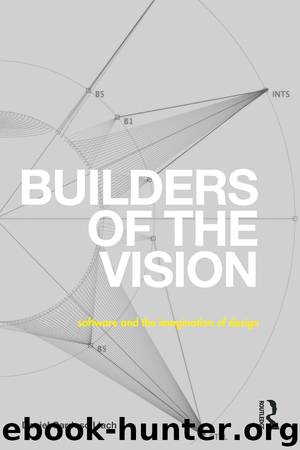Builders of the Vision by Cardoso Llach Daniel

Author:Cardoso Llach, Daniel [Daniel Cardoso Llach]
Language: eng
Format: epub
ISBN: 9781317755944
Publisher: Taylor & Francis (CAM)
Part Two
Software from the Field
Figure 7.0 According to UAE historian Frauke Beard-Hey, Abu Dhabi, the largest emirate in the UAE, “owes its character to the desert.”
Chapter 7
The Architect’s Bargain
Building the “Bilbao Effect” in the Abu Dhabi Desert
Driving through Abu Dhabi’s corniche is a cinematic experience. A long stretch of skyscrapers and the blue waters of the Arabian Sea flank the carefully landscaped, palm-lined highway. Westwards, close to the Emirates Palace—a former royal residence turned “7-star” hotel—a monumental photograph of Sheikh Zayed reminds the drivers—and the rare pedestrian—of the deeds of the country’s “father.” A short drive away across an artificial peninsula is the Marina Mall, an American-style commercial enclave looking back towards the city, surrounded by a sea of parking and a marina full of modern yachts. On a hot November afternoon, I walk to the mall’s entrance under the white tents shading the cars. The shoppers are mostly expatriates—members of a white European or, in some cases, South Asian middle class—who, perhaps like myself, feel “re-countrified” by the carefully crafted familiarity of the commercial landscape (IKEA, Carrefour, a multiplex, and designer stores) and by the circular predictability of the building’s layout. Some, distinguishable by their kanduras and abayas, seem local, walking in gender-separated groups. To use a shopping cart, customers insert one dirham (approx. 25c) in a slot in the cart’s handling bar. However, no customer returns the cart by herself. Young South Asian men, distributed around the sweltering lot in a quiet swarm, return the carts and retrieve the deposit, in a semi-formal economic entanglement as the machines’ grooms.
We can draw an analogy between the mall and the emirate, as Abu Dhabi’s aspirations to define its own brand of modernity are, somewhat paradoxically, premised on the adoption of a white Anglo-American and European middle-class aesthetic, as a metaphorical bridge between the Arab and Western worlds, and between tradition and future. Like the space of the mall, the emirate represents itself to certain outsiders as a familiar domain. Members of the expatriate consultant class navigating the mall can be thought of as “flexible citizens,” defined by Aihwa Ong as individuals taking advantage of “the split between state-imposed identity and personal identity caused by political upheavals, migration, and changing global markets.” However, the young men in the parking lot are part of a less “flexible” reality, complicating the progressiveness of the state’s urbanist vision, and the efficiency of the computational and legal scaffoldings deployed for its construction.1 Indexing the state’s representational politics and labor regimes, architecture is both symbol and enabler in this arrangement.
To explore how software discourses and practices confront the social and geopolitical landscapes framing the production of Abu Dhabi’s landmark architectural projects, the following chapters draw from one year of participant observation among expatriate architects, BIM consultants, engineers, and subcontractors invested in the construction of some of the emirate’s flagship architectural visions. How do these professionals confront, and make sense of, this problematic context? What are the digital, physical, and legal spaces enabling their transactions? How do
Download
This site does not store any files on its server. We only index and link to content provided by other sites. Please contact the content providers to delete copyright contents if any and email us, we'll remove relevant links or contents immediately.
| American National Standards Institute (ANSI) Publications | Architecture |
| History | Measurements |
| Patents & Inventions | Research |
Whiskies Galore by Ian Buxton(41879)
Introduction to Aircraft Design (Cambridge Aerospace Series) by John P. Fielding(33064)
Small Unmanned Fixed-wing Aircraft Design by Andrew J. Keane Andras Sobester James P. Scanlan & András Sóbester & James P. Scanlan(32743)
Craft Beer for the Homebrewer by Michael Agnew(18140)
Turbulence by E. J. Noyes(7936)
The Complete Stick Figure Physics Tutorials by Allen Sarah(7307)
Kaplan MCAT General Chemistry Review by Kaplan(6867)
The Thirst by Nesbo Jo(6826)
Bad Blood by John Carreyrou(6552)
Modelling of Convective Heat and Mass Transfer in Rotating Flows by Igor V. Shevchuk(6391)
Learning SQL by Alan Beaulieu(6210)
Weapons of Math Destruction by Cathy O'Neil(6143)
Man-made Catastrophes and Risk Information Concealment by Dmitry Chernov & Didier Sornette(5921)
Digital Minimalism by Cal Newport;(5664)
Life 3.0: Being Human in the Age of Artificial Intelligence by Tegmark Max(5474)
iGen by Jean M. Twenge(5366)
Secrets of Antigravity Propulsion: Tesla, UFOs, and Classified Aerospace Technology by Ph.D. Paul A. Laviolette(5309)
Design of Trajectory Optimization Approach for Space Maneuver Vehicle Skip Entry Problems by Runqi Chai & Al Savvaris & Antonios Tsourdos & Senchun Chai(5011)
Pale Blue Dot by Carl Sagan(4912)
